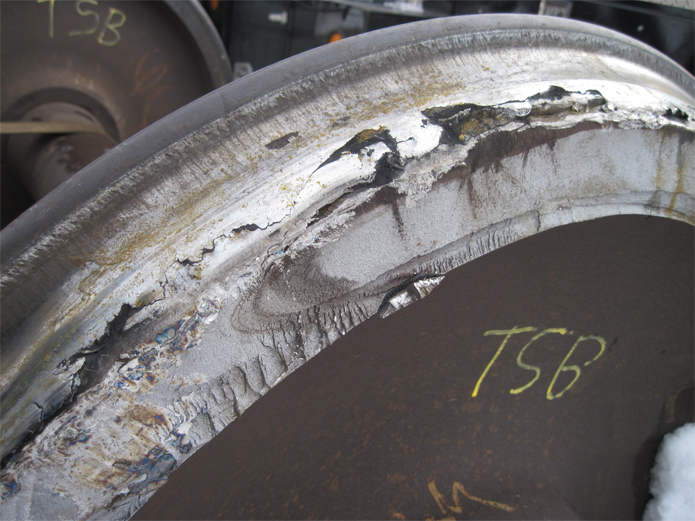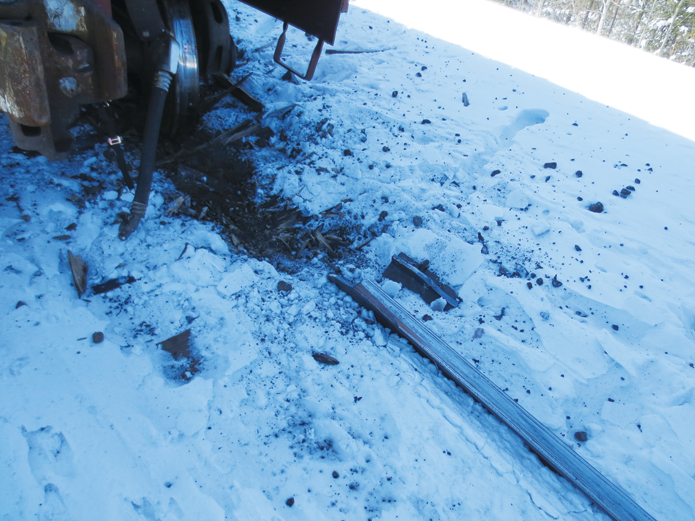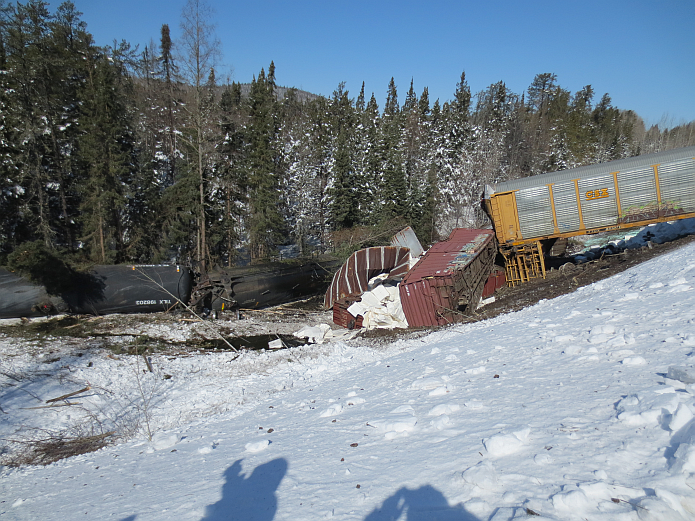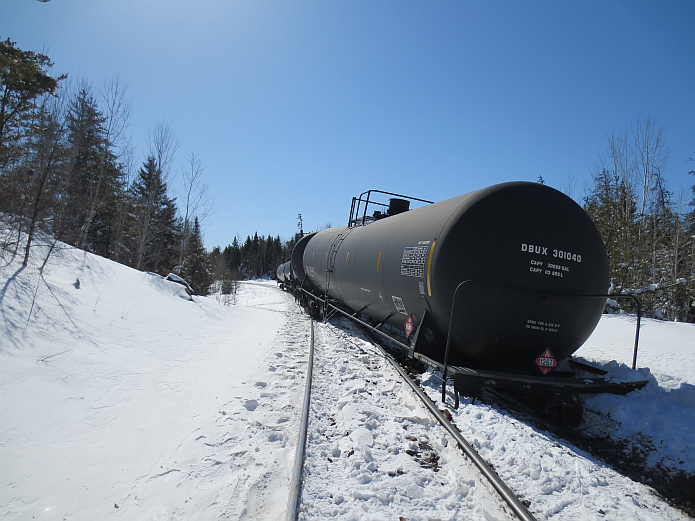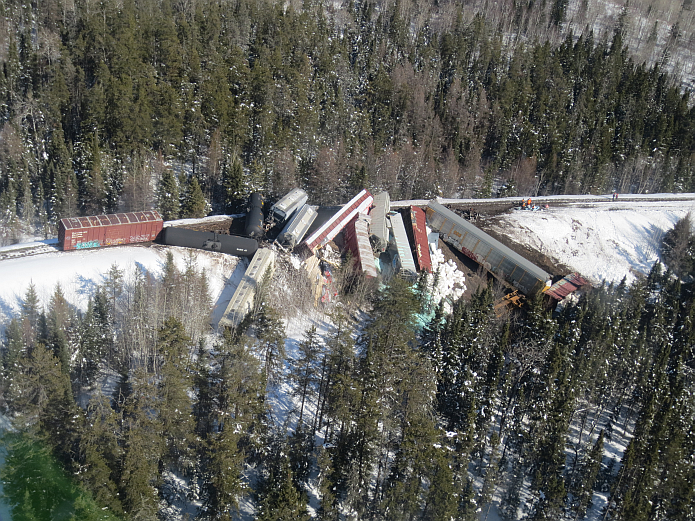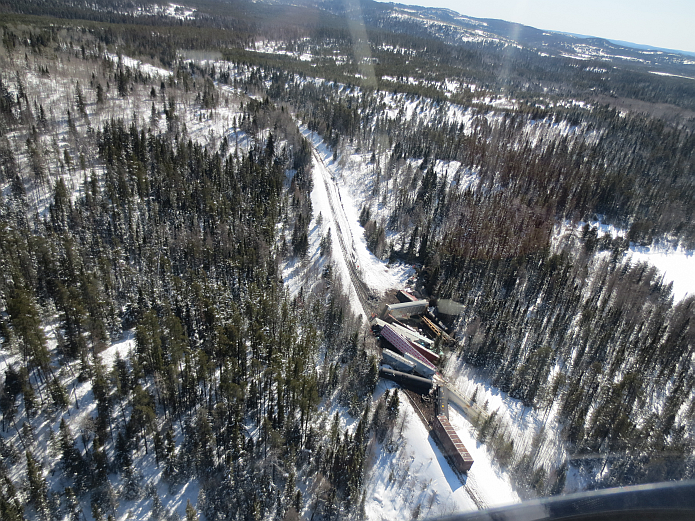Main-track train derailment
Canadian Pacific Railway
Freight train 420-02
Mile 9.41 Heron Bay Subdivision
White River, Ontario
The occurrence
On , at about 0750 Eastern Daylight Time, Canadian Pacific Railway freight train 420-02 was proceeding eastward at 34.9 miles per hour on the Heron Bay Subdivision when it experienced an undesired emergency brake application at Mile 9.16 near White River, Ontario. Subsequent inspection determined that 22 cars (19 loads and 3 empties) had derailed, 7 of which were dangerous goods tank cars loaded with petroleum crude oil (UN 1267). During the derailment, a number of cars rolled down an embankment. Two of the dangerous goods tank cars released approximately 101 700 litres of product, and another non-dangerous goods tank car released approximately 18 000 litres of product. There were no injuries.
Media materials
News releases
Rail fracture due to broken wheel led to April 2013 derailment of Canadian Pacific train near White River, Ontario
Read the news release
Deployment notice
Transportation Safety Board of Canada deploys a team to the site of a derailment near White River, Ontario
The Transportation Safety Board of Canada (TSB) is deploying a team of investigators to the site of a derailment near White River, Ontario. At approximately 7:50 Eastern Time, a Canadian Pacific freight train derailed 22 cars. One of the cars is leaking crude oil. The TSB will gather information and assess the occurrence.
Investigation information
Download high-resolution photos from the TSB Flickr page.
Class of investigation
This is a class 3 investigation. These investigations analyze a small number of safety issues, and may result in recommendations. Class 3 investigations are generally completed within 450 days. For more information, see the Policy on Occurrence Classification.
TSB investigation process
There are 3 phases to a TSB investigation
- Field phase: a team of investigators examines the occurrence site and wreckage, interviews witnesses and collects pertinent information.
- Examination and analysis phase: the TSB reviews pertinent records, tests components of the wreckage in the lab, determines the sequence of events and identifies safety deficiencies. When safety deficiencies are suspected or confirmed, the TSB advises the appropriate authority without waiting until publication of the final report.
- Report phase: a confidential draft report is approved by the Board and sent to persons and corporations who are directly concerned by the report. They then have the opportunity to dispute or correct information they believe to be incorrect. The Board considers all representations before approving the final report, which is subsequently released to the public.
For more information, see our Investigation process page.
The TSB is an independent agency that investigates air, marine, pipeline, and rail transportation occurrences. Its sole aim is the advancement of transportation safety. It is not the function of the Board to assign fault or determine civil or criminal liability.
